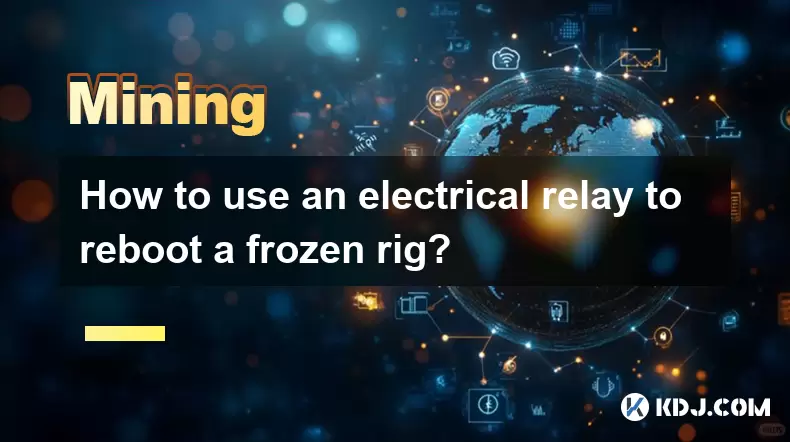-
 Bitcoin
Bitcoin $117400
-0.46% -
 Ethereum
Ethereum $3768
0.60% -
 XRP
XRP $3.551
2.09% -
 Tether USDt
Tether USDt $1.000
0.00% -
 Solana
Solana $203.2
11.30% -
 BNB
BNB $770.9
1.92% -
 USDC
USDC $0.9999
0.01% -
 Dogecoin
Dogecoin $0.2709
-0.02% -
 Cardano
Cardano $0.9024
4.49% -
 TRON
TRON $0.3139
0.60% -
 Hyperliquid
Hyperliquid $45.60
-1.41% -
 Stellar
Stellar $0.4730
-1.34% -
 Sui
Sui $4.025
2.15% -
 Chainlink
Chainlink $19.79
2.19% -
 Hedera
Hedera $0.2724
-2.39% -
 Avalanche
Avalanche $25.93
3.05% -
 Bitcoin Cash
Bitcoin Cash $524.0
-1.83% -
 Shiba Inu
Shiba Inu $0.00001558
0.50% -
 Litecoin
Litecoin $116.7
-0.30% -
 UNUS SED LEO
UNUS SED LEO $8.996
0.00% -
 Toncoin
Toncoin $3.334
1.83% -
 Polkadot
Polkadot $4.506
0.34% -
 Uniswap
Uniswap $10.99
4.83% -
 Ethena USDe
Ethena USDe $1.001
0.03% -
 Pepe
Pepe $0.00001461
3.17% -
 Monero
Monero $320.3
-1.01% -
 Bitget Token
Bitget Token $4.935
0.36% -
 Dai
Dai $0.9998
0.00% -
 Aave
Aave $322.4
-1.25% -
 Bittensor
Bittensor $455.6
9.33%
How to use an electrical relay to reboot a frozen rig?
An electrical relay in mining rigs allows remote power cycling to reboot unresponsive systems, improving efficiency and enabling automation through microcontrollers or timers.
Jul 20, 2025 at 07:56 pm

Understanding the Role of an Electrical Relay in Mining Rigs
An electrical relay is a switch that uses an electromagnet to mechanically control another circuit. In the context of cryptocurrency mining rigs, relays are often used to remotely power cycle a system when it becomes unresponsive or "frozen." This can be particularly useful for miners who operate multiple rigs and cannot always physically access each machine.
The primary function of the relay here is to interrupt the power supply to the rig momentarily, simulating the action of unplugging and replugging the device. This method is more efficient than manual rebooting and can be automated with additional components like timers or remote-controlled switches.
Relays come in various types, such as SPDT (Single Pole Double Throw), which is commonly used in DIY mining setups. It's essential to choose a relay compatible with your power source and the voltage requirements of your mining rig.
Tools and Components Needed
Before beginning the setup, ensure you have all the necessary tools and components. The core elements include:
- A SPDT relay module
- A power source (typically 12V or 24V depending on the relay)
- A microcontroller (such as Arduino or Raspberry Pi) – optional for automation
- Wires and connectors
- A fuse or circuit breaker for safety
- A screwdriver set
- Wire strippers and cutters
Safety should always come first when dealing with electrical systems. Make sure to disconnect all power sources before starting any wiring process.
Step-by-Step Wiring Guide
Setting up the relay involves connecting it between the power supply unit (PSU) of the mining rig and the actual rig itself. Follow these steps carefully:
- Identify the main power line going into your mining rig.
- Cut the live (hot) wire from the PSU to the rig. Never cut the neutral or ground wire.
- Connect one end of the cut live wire to the common terminal of the relay.
- Attach the other end of the cut live wire to the normally open (NO) terminal.
- Connect the relay’s coil terminals to a separate low-voltage power source (e.g., 5V from a USB port or microcontroller).
- Ensure all connections are secure and insulated properly using heat shrink tubing or electrical tape.
Double-check the relay’s datasheet to confirm terminal designations and voltage compatibility before powering anything up.
Manual vs Automated Triggering Methods
Once the relay is wired correctly, you can trigger it either manually or automatically.
For manual triggering, you can use a push button connected across the relay’s coil terminals. Pressing the button energizes the coil, opens the circuit, and cuts power to the rig temporarily.
If you want a more advanced solution, consider using a microcontroller like an Arduino. You can program it to send a signal to the relay at specific intervals or based on external conditions (like temperature spikes or GPU errors). Here's how:
- Connect the microcontroller’s digital output pin to one side of the relay coil.
- Ground the other side of the coil.
- Use code to activate the pin for a few seconds, then deactivate it to simulate a reboot.
Ensure the microcontroller and relay voltages match to avoid damaging either component. If they don’t, use a transistor or optocoupler to isolate them.
Testing and Troubleshooting the Setup
After completing the wiring, it's time to test the relay-based reboot system.
- Power up the relay’s control circuit.
- Trigger the relay manually or via software.
- Observe whether the mining rig loses and regains power.
- Check if the rig boots back up and resumes mining operations normally.
Common issues may include:
- Incorrect terminal connections leading to continuous power flow.
- Overheating due to insufficient current handling by the relay.
- Failure to trigger because of mismatched voltage levels.
If the rig doesn’t respond, recheck all connections and verify the relay’s specifications against your power supply.
FAQs
Q: Can I use a solid-state relay instead of an electromechanical one?
A: Yes, solid-state relays offer faster switching and longer life but tend to be more expensive and may require heat sinks for high-power applications.
Q: Is it safe to use a relay on a PSU delivering over 20 amps?
A: Only if the relay is rated for that current. Always check the relay’s maximum load capacity before installation.
Q: Will this method preserve my mining session data?
A: No, a hard reboot via relay will not save progress. Your mining software must support auto-reconnect features to resume work after power restoration.
Q: Can I control multiple rigs with one relay?
A: Technically yes, but each additional rig increases the load on the relay. Use a separate relay per rig or a multi-channel relay board for better reliability.
Disclaimer:info@kdj.com
The information provided is not trading advice. kdj.com does not assume any responsibility for any investments made based on the information provided in this article. Cryptocurrencies are highly volatile and it is highly recommended that you invest with caution after thorough research!
If you believe that the content used on this website infringes your copyright, please contact us immediately (info@kdj.com) and we will delete it promptly.
- XRP, Bitcoin, Ripplecoin: Navigating the Crypto Landscape in 2025
- 2025-07-22 20:30:13
- Cardano Ecosystem Watch: Can PayFi Token Remittix Trigger an ADA Overtake?
- 2025-07-22 20:50:13
- JasmyCoin Price Forecast: Chart Analysis Points to Potential Surge
- 2025-07-22 20:55:13
- Remittix, XRP, and Dogecoin: What's Hot in the Crypto Game Right Now?
- 2025-07-22 20:10:14
- BlockchainFX, PEPE, and USDT: What's the Buzz in the Crypto Jungle?
- 2025-07-22 18:50:12
- Ripple's RLUSD: Institutional Backing Fuels Stablecoin Ascent
- 2025-07-22 18:30:12
Related knowledge

How are crypto mining profits taxed?
Jul 14,2025 at 12:28am
Understanding Cryptocurrency Mining and TaxationCryptocurrency mining involves validating transactions on a blockchain network and earning rewards in ...

How to keep a mining rig cool
Jul 12,2025 at 01:42pm
Understanding the Importance of Cooling in Mining RigsCryptocurrency mining is an intensive process that places heavy demand on hardware components, p...

How to mine crypto on a gaming PC
Jul 16,2025 at 12:00pm
What is Crypto Mining on a Gaming PC?Crypto mining involves using your computer's processing power to validate transactions on a blockchain network. A...

How to set up a crypto miner
Jul 16,2025 at 09:14am
Understanding Ethereum Gas Fees: What Are They and How Do They Work?Ethereum gas fees are a fundamental aspect of the network, representing the cost r...

Can you mine crypto on a laptop?
Jul 16,2025 at 02:21am
Is It Feasible to Mine Cryptocurrency on a Laptop?Mining cryptocurrency on a laptop is technically possible, but feasibility depends heavily on the ha...

Is crypto mining worth it?
Jul 16,2025 at 01:21am
Understanding the Basics of Crypto MiningCrypto mining refers to the process of validating transactions on a blockchain network by solving complex mat...

How are crypto mining profits taxed?
Jul 14,2025 at 12:28am
Understanding Cryptocurrency Mining and TaxationCryptocurrency mining involves validating transactions on a blockchain network and earning rewards in ...

How to keep a mining rig cool
Jul 12,2025 at 01:42pm
Understanding the Importance of Cooling in Mining RigsCryptocurrency mining is an intensive process that places heavy demand on hardware components, p...

How to mine crypto on a gaming PC
Jul 16,2025 at 12:00pm
What is Crypto Mining on a Gaming PC?Crypto mining involves using your computer's processing power to validate transactions on a blockchain network. A...

How to set up a crypto miner
Jul 16,2025 at 09:14am
Understanding Ethereum Gas Fees: What Are They and How Do They Work?Ethereum gas fees are a fundamental aspect of the network, representing the cost r...

Can you mine crypto on a laptop?
Jul 16,2025 at 02:21am
Is It Feasible to Mine Cryptocurrency on a Laptop?Mining cryptocurrency on a laptop is technically possible, but feasibility depends heavily on the ha...

Is crypto mining worth it?
Jul 16,2025 at 01:21am
Understanding the Basics of Crypto MiningCrypto mining refers to the process of validating transactions on a blockchain network by solving complex mat...
See all articles

























































































